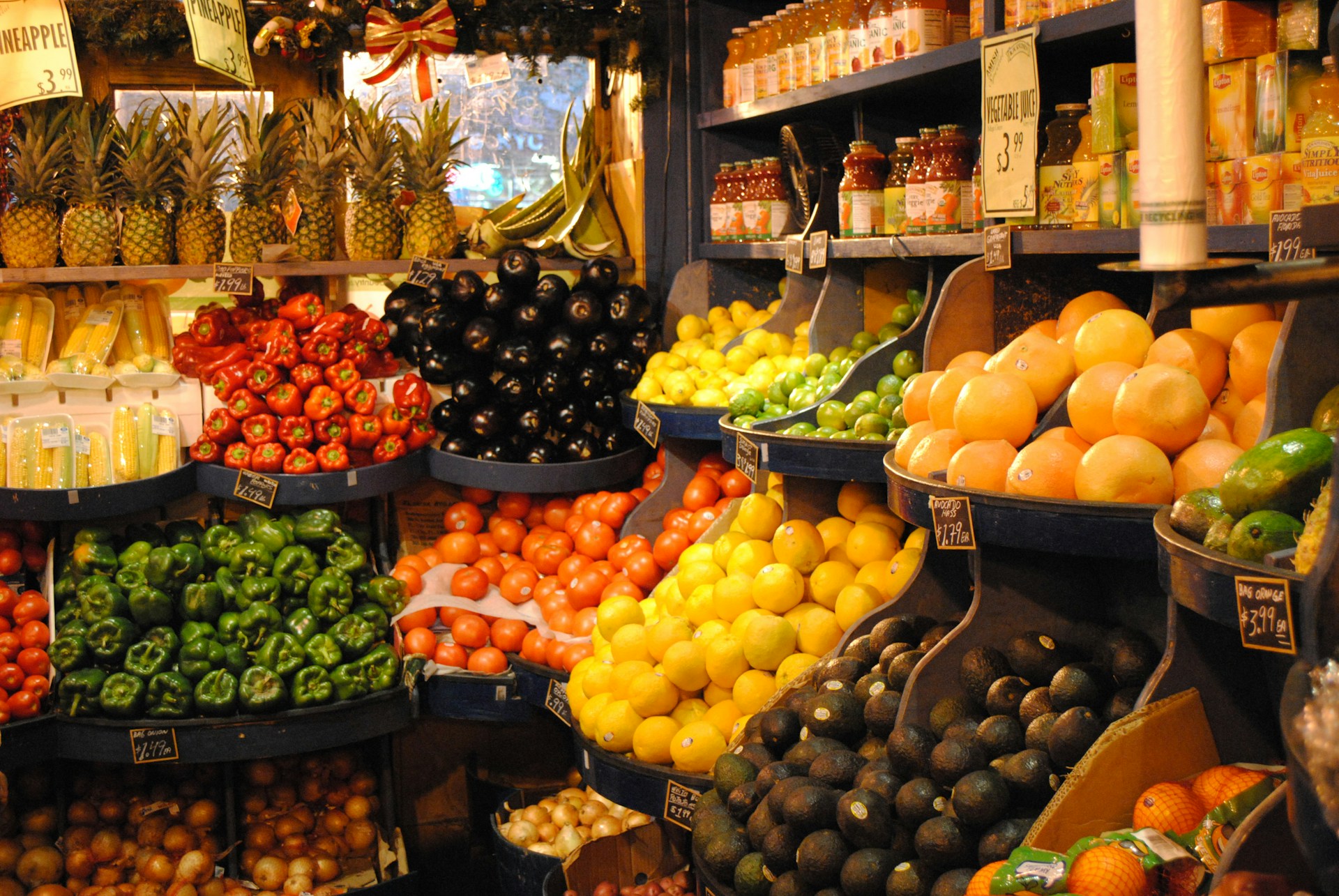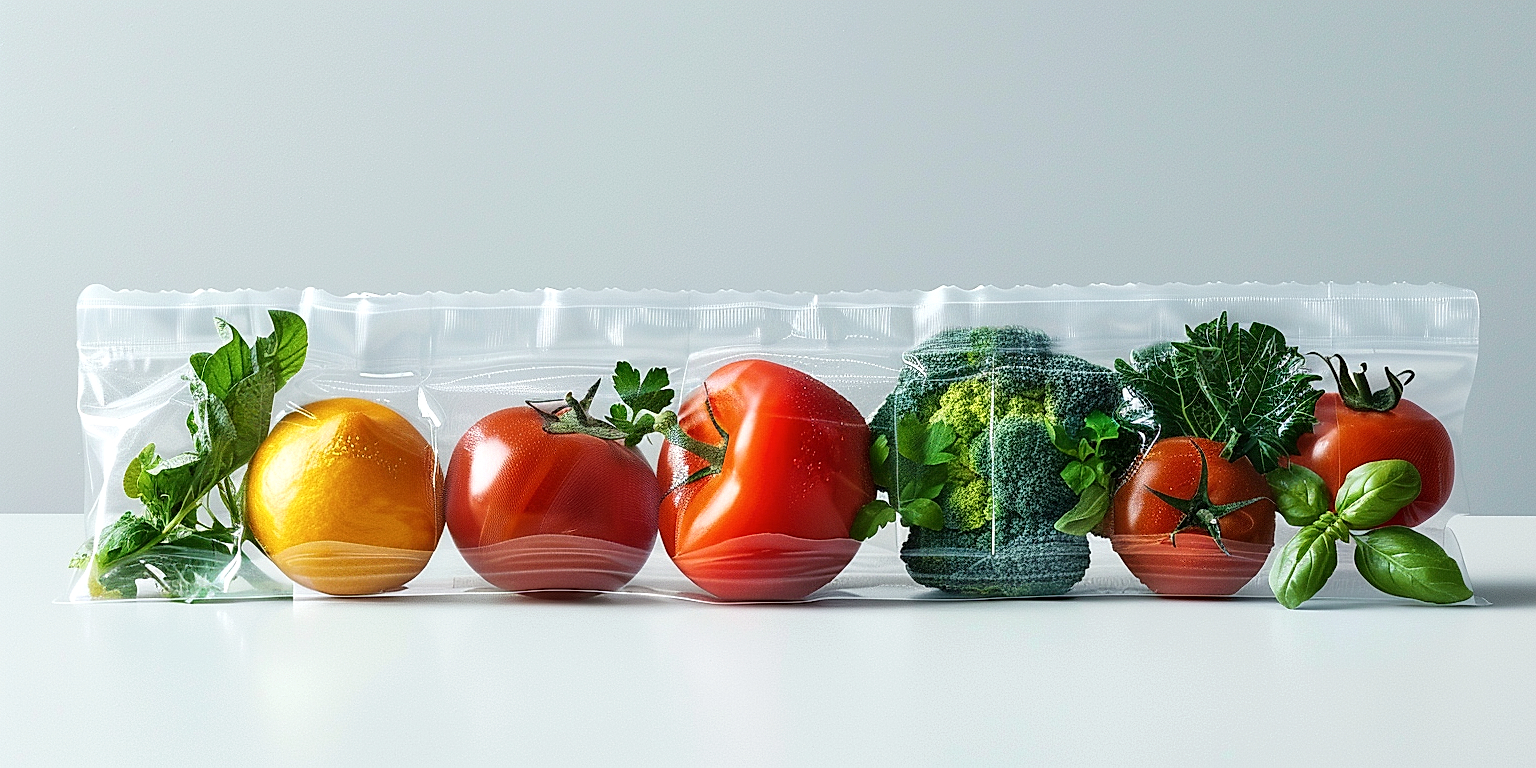Guaranteeing excellent produce quality isn’t just beneficial to a retailer’s reputation – it’s essential.
From farm to checkout, various factors can influence the freshness, texture, and flavor of fruits and vegetables.
Retailers must execute vigilant oversight and effective standards to ensure they sell the best possible produce.
This necessitates addressing storage conditions, handling practices, inventory rotation, and much more.
A comprehensive approach like this promotes customer satisfaction and loyalty.
Let’s explore some concrete strategies retailers can implement to maintain high-quality produce.
Tips For Ensuring Produce Quality In Retail
1. Buy produce from reliable, trusted suppliers.
To ensure the quality of products in retail, a crucial variable is the source of the products you’re selling. Especially when it comes to produce, the quality and freshness of the items matter greatly to consumers and can impact their purchasing decisions.
The first step in ensuring it is to buy produce from reliable, trusted suppliers. This significantly reduces the likelihood of getting substandard fruits and vegetables and consequentially having to deal with unsatisfied customers and potential losses.
When we talk about trusted suppliers, we are referring to those who have been in the market for a long time and have established a reputation for delivering quality products consistently.
Finding the right suppliers can sometimes be a challenge, but research and networking are essential in this process.
Start by asking for recommendations from fellow retailers or doing online searches. Look for reviews or testimonials from other companies that have done business with the suppliers you are considering.
While this process may be time-consuming, it’s worth the effort as it directly impacts the quality of produce displayed in your store and consumer satisfaction.
Also, make it a point to learn about how the suppliers handle and store their products. Proper handling and storage are essential factors in preserving the quality of produce.
Suppliers who follow best practices in handling and storing fruits and vegetables are more likely to provide you with produce that would not only last longer but also retain its quality.
Responsiveness is another critical characteristic that a trusted supplier should have. They should be able to answer your inquiries quickly and satisfactorily, and fulfill your orders promptly.
Moreover, they should be capable of providing you with various kinds of produce in the quantities that you need. Having a single, reliable source for most of your produce requirements can simplify the procurement process.
Another valuable tip is to meet your suppliers in person if possible or virtually, to establish a personal relationship with them.
Seeing their operations firsthand or being able to discuss your requirements and expectations directly can give you a better understanding of whether they can deliver the kind of quality produce you need for your retail store.
Frequent communication is also key so you can stay updated about their product availability, potential issues that may affect the quality of their produce, and other pertinent information.
Lastly, don’t forget about pricing and payment terms. Your supplier should be able to provide you with produce at reasonable prices, and the payment terms should be workable for your business.
Bear in mind that maintaining a good relationship with your supplier is just as crucial as finding the right one.
2. Store fruits and vegetables at appropriate temperatures.
When running a retail business, one of the critical aspects affecting the quality of your produce is how you store them.
The freshness and vitality of each fruit and vegetable can drastically diminish if they’re stored at wrong temperatures.
Therefore, it is crucial to uphold the correct storage temperature for every type of produce that comes into your establishment.
Appropriate storage temperatures can extend the life of your produce and preserve its appearance, texture, and nutritional value.
Different fruits and vegetables require different storage conditions; some need to be kept cold while others need a more tropical climate.
The temperature for storing fruits usually ranges from 40°F to 60°F (4.4°C to 15.6°C) depending on the type of fruit.
For instance, apples and berries should be stored at about 32°F (0°C), while bananas and avocados demand warmer temperatures, around 58°F (14.4°C).
On the other hand, most vegetables prefer cooler temperatures, generally between 32°F and 45°F (0°C to 7.2°C).
Regardless of what produce you’re storing, you should never leave them in locations that experience fluctuations in temperature.
This could lead to pace up the ripening process, and subsequently, speed up spoilage.
Further, relative humidity in your storage units can also make a major difference.
High humidity levels help to preserve moisture in fruits and vegetables, preventing them from wilting.
But, excessive humidity may also enhance the growth of mold and bacteria.
Thus, wondering what’s the correct humidity? Ideally, keep it between 80% and 95%.
Overall, it is clear that correct storage temperatures form an important step towards ensuring produce quality in retail.
So, invest in proper cold-storage technology and apply these tips to keep your produce fresh and appealing.
3. Regularly Rotate Stock Using First-In-First-Out Method.
Keeping the quality standard high in your stock involves integrating an effective stock rotation method.
Utilizing the First-In-First-Out (FIFO) strategy is recommended in guaranteeing produce freshness.
This policy simply implies using the products that arrived first, before using the recently arrived ones.
FIFO not only keeps produce in the best state for consumers, but it also significantly reduces potential waste.
It’s important to properly train your staff on the FIFO method to ensure seamless implementation.
Additionally, good organization and record-keeping improve the accuracy of the stock rotation process.
Appropriate scheduling also helps in maintaining consistency in applying the First-In-First-Out strategy, thus, making certain the freshness and top-quality of your produce throughout.
While implementing this rotation method, it’s essential to ensure that the store’s display areas are arranged in an orderly manner.
The store operational protocol should entail the older stock being accessed more easily than the more recent stock.
Transparency and labeling can aid in clearly stating the arrival dates to ensure following the FIFO method even during the busier periods.
Improper tags or misplaced stocks can lead to confusion and consequently, the degradation of produce quality.
Moreover, adapting the FIFO rotation method is not only beneficial for produce but can be applied to other departments in a retail store as well.
Having such aspects in place enhances consumer perception towards your store as a reliable source of fresh produce.
It is worth noting that sometimes, due to unpredictable sales, it might not always be possible to follow the FIFO method to the letter.
In such instances, the staff should be made aware and given the autonomy to make informed decisions in order to maximize the freshness and reduce the wastage of produce.
Apart from that, continuous evaluation is essential in perfecting the use of FIFO or identifying any discrepancies that can be ironed out.
4. Perform daily checks for spoilage or damage.
Maintaining a high-quality standard for retail produce requires diligent attention to detail.
One critical element in this process is the practice of conducting daily checks for spoilage or damage.
A daily check system reduces the likelihood that your customers will ever encounter below-standard produce in your shop.
Checking produce daily not only ensures freshness, but it also helps to maintain a hygienic environment.
Removing spoiled fruits and vegetables promptly helps to prevent widespread contamination.
Signs of spoilage may include browning, wilting, mold development, soft spots, or unpleasant smells.
Damaged produce can also lead to rapid degradation and contamination of nearby goods, so it’s advisable to remove them promptly.
By identifying and eliminating bad produce, you’re ensuring that a high level of freshness is consistently maintained across your stock.
Even minor signs of spoilage or damage need to be treated seriously as they can rapidly escalate into bigger problems if left unchecked.
It’s not just about maintaining the health and safety standards, but working on building a reputation for quality.
Customers appreciate a store where they can always find fresh and high-quality produce.
Regular spoilage checks mean you are less likely to lose out to your competitors due to poor product quality.
Incorporating daily checks into your routine requires discipline and commitment, but the rewards in terms of customer satisfaction and loyalty cannot be overstated.
Training your staff to properly identify spoilage and damage is also an essential part of maintaining produce quality.
Keep in mind that retail is a detail-oriented business and the success of your store relies on you getting these details right.
Regular checking, identifying, and removing spoiled or damaged goods goes a long way in guaranteeing that you provide your customers with only the best quality of produce.
5. Display Produce Neatly, Avoiding Overcrowding or Bruising.
For a retailer, each step in the display process significantly contributes to the overall quality of the produce.
To ensure freshness and longevity, it is critical to maintain optimal produce display techniques.
One of the major factors to focus on is avoiding overcrowding the produce.
When fruits and vegetables are overloaded in a display, it can create a pressurized environment that leads to quicker spoilage.
This overstocking can also lead to bruising and physical damage to the produce, reducing its quality and visual appeal.
Properly displayed produce not only looks appealing but also maintains its fresh state longer, encouraging customers to make a purchase.
Moreover, neatly displaying fruits and vegetables also enables better air circulation around the items, which helps to maintain their freshness for more extended periods.
A messy or crowded display is a visual deterrent for customers as it often signifies neglect and poor management.
It is also important to consider the natural shapes and colors of fruits and vegetables when setting up a display.
Harmoniously arranging produce based on colors can make the display more appealing and will draw customer’s attention.
Ensure to place heavier items at the bottom of the display and lighter items on top to prevent bruising and damage.
Implementing a consistent system for display refills can ensure that newer produce is not placed on top of older produce, preventing the older items from getting squashed or lost at the bottom.
Regular cleanup and re-organizing of the display area is also important for maintaining the quality and visual appeal of the produce.
This can help to remove and replace any spoiling items promptly before they can affect the surrounding produce.
Remember, a well-maintained and attractive display can enhance the perceived value of fruits and vegetables, encouraging shoppers to purchase more.
Through careful attention to display practices, retailers can ensure their produce remains fresh and high-quality, maximizing satisfaction and repeat business from their customers.
The Bottom Line
Maintaining the freshness and quality of produce is a paramount concern that demands a stringent approach.
Ensuring purchases from reliable, trusted suppliers is the initial step, followed by practicing proper storage and rotation techniques.
Regular inspections for signs of spoilage and damage will help maintain the integrity of the stock.
Finally, displaying the produce within strategically arranged and careful showcases will help extend their freshness, attract customers, and minimize undue loss.
These practices align with the pursuit of providing customers with top-quality fruits and vegetables for their consumption while maximizing the longevity of the produce inventory.




